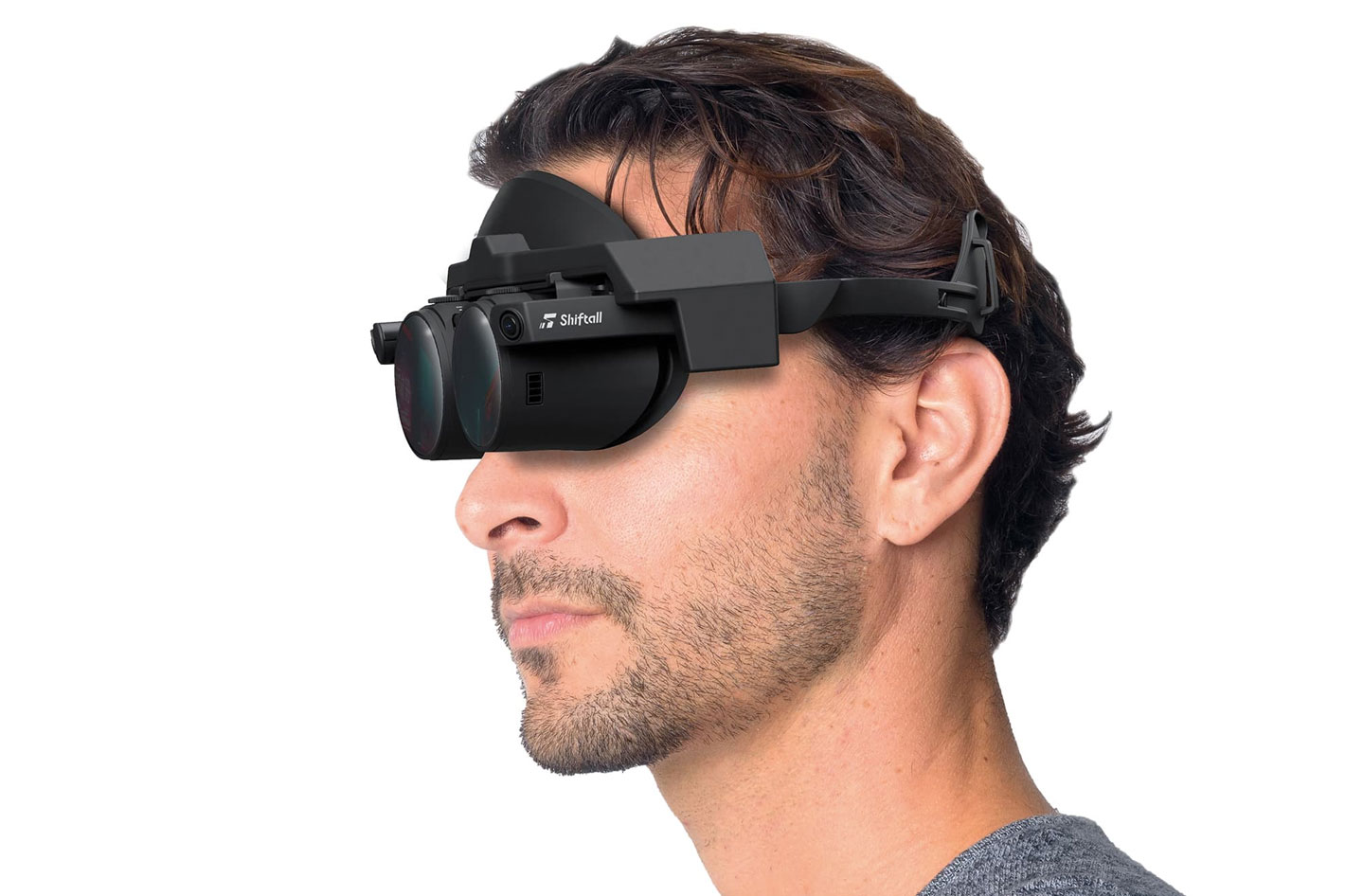
Unveiled as a prototype at CES in 2020 and announced as an upcoming product at CES 2022, the MeganeX which is an ultra-lightweight, 5.2K HDR VR headset supporting 6 degree-of-freedom (DoF) head position detection and various SteamVR applications is finally coming to the market, with a scheduled release date of July 2023.
Shiftall, a fully owned subsidiary of Panasonic Corporation and the company behind the VR goggles (this is not a conventional headset), announced it will be releasing MeganeX and MeganeX Business Edition, not in April, as initially suggested, but in July. The launch date was pushed back, the company states, due to a review of the manufacturing process.
The MeganeX are equipped with a 5.2 K/10 bit HDR micro OLED display by Kopin and pancake lens by Panasonic. These will deliver, according to Shiftall, the world’s highest level of viewing experience and black expression that only OLED can provide. A folding frame with built-in speakers makes it easy to carry around. It supports 6DoF and lets you enjoy a variety of SteamVR-enabled VR applications.
The MeganeX is a version that focuses on fit and comfort, Shiftall claims. While being lightweight, it provides a comfortable playing for heavy users, those who spend more than 2,000 hours a year in the Metaverse. A forehead pad distributes pressure and ensures an IPD of 56 -72 mm. The MeganeX comes with support for lens adapters, for those who need to use glasses… which apparently will not be easy to wear with these VR goggles. The consumer version of the MeganeX will cost $1699, which is well above most of the consumer VR products available today.
The MeganeX Business Edition is designed, Shiftall says, for typical Business use cases. It’s conceived to be shared among multiple users by supporting the diopter adjustment mechanism for each person’s eyesight. The nose holding pad makes it easy to wear and take off. Curiously, this version has an IPD variation of only 62-72mm, which seems a bit on the short side… Also, there is no indication of price, which will be higher, much higher, I presume, than the base MeganeX.
The MeganeX is a versatile product, with its Snapdragon XR1 Platform allowing it to work as a non-tethered VR headset, although the compatibility with DisplayPort connection (and USB 2.0) for PC suggests that PCVR is the preferable way of use, to get the most of the extreme resolution – 2560×2560 per eye. The headset has a USB Type-C with a converter box, which is included in the package.
As the MeganeX appears to be designed with PCVR in mind, the fact that it’s foldable is not especially important, because… you’ll need to carry a powerful PC to use it, and if you want to access the apps available through the Steam platform. Why fold a pair of VR goggles if you’re going nowhere with it? On the other hand, as a non-tethered solution, the MeganeX lags behind VR headsets as the Pico 4, which uses Snapdragon XR2 Platform… and costs a third of the price.
Although I was excited when the first news of the MeganeX arrived, I am not so sure it will fare well in a market where a few new headsets are announced, especially because its price places it well above what most people will want to pay. Although most will speak of Meta products as a reference for price, the introduction of the Pico 4, which is better than the Quest 2, must be considered when looking at what the MeganeX has to offer. Especially because it costs so much more…
